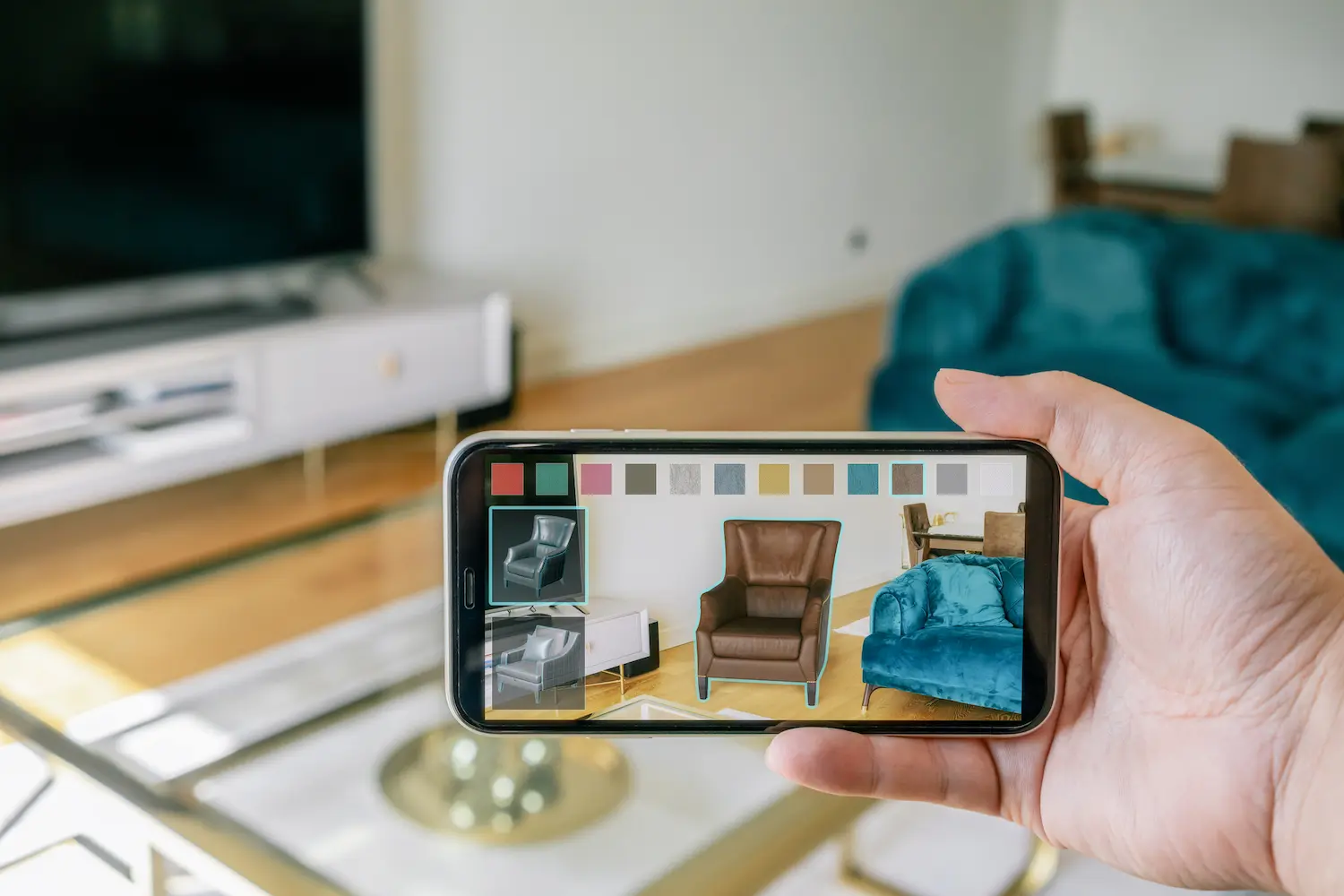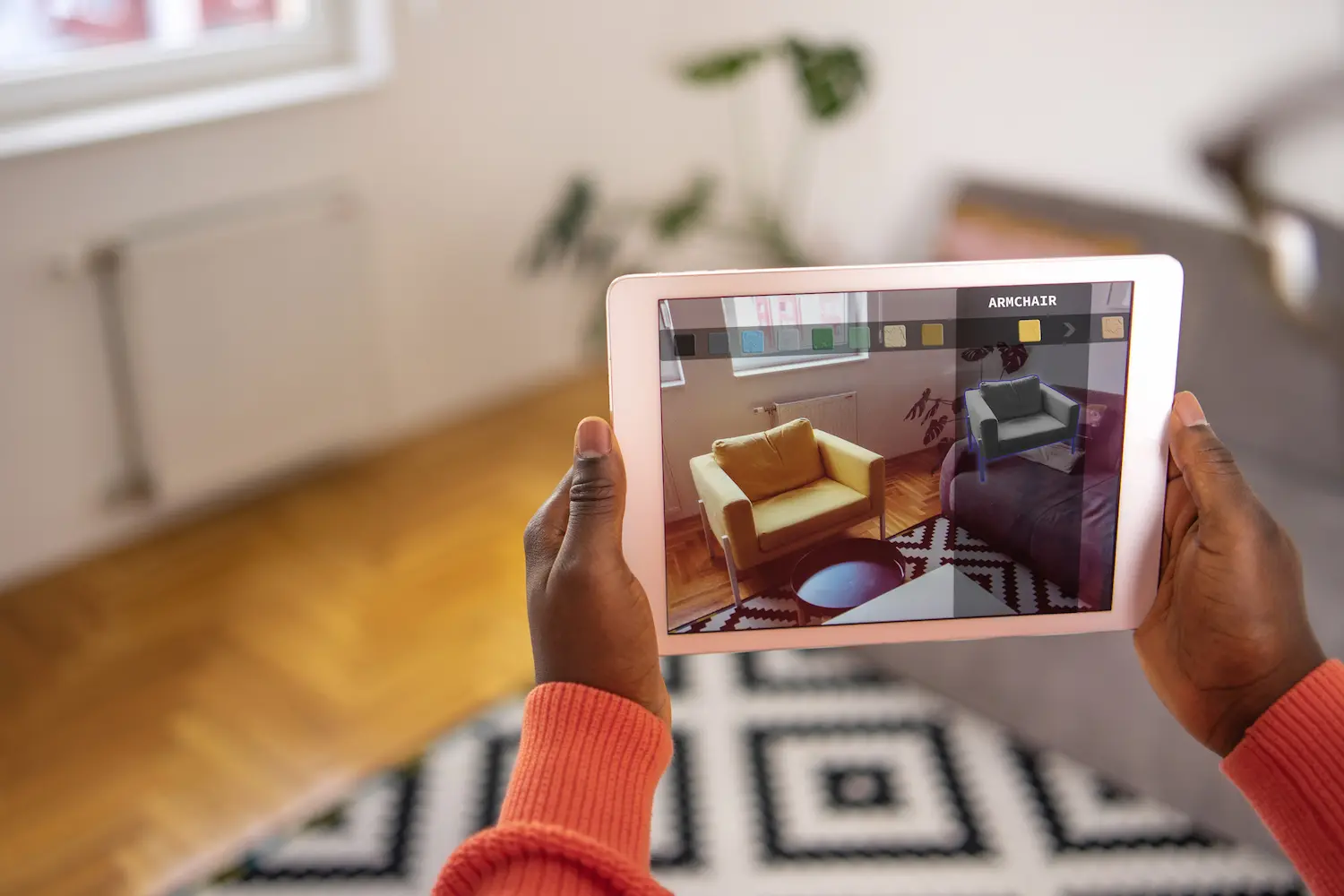Choosing furniture used to rely on imagination and guesswork. Today, augmented reality furniture experiences are changing that by offering customers interactive, data driven previews of products in their own spaces. This technology bridges the gap between online browsing and in person evaluation by layering digital models onto real world environments using smartphones or tablets.
Furniture brands are embracing augmented reality (AR) to help customers visualize pieces, try different configurations, and ultimately feel more confident in their decisions. From customizable sofas to fully mapped room layouts, AR is proving to be a powerful tool not just for consumers, but for the entire industry. Here's a closer look at how it's being applied, and why it matters.
Applications of AR in furniture
Augmented reality furniture tools go far beyond digital previews. They're used at nearly every stage of the buyer journey, from browsing to after purchase assistance. These applications create seamless, immersive experiences that enhance both online and in store shopping.

Visual room placement
One of the most common uses of AR is virtual placement. Customers can project life size 3D models of furniture into their homes using just their smartphones. This functionality allows them to see how an item fits in a room, check spatial relationships with existing pieces, and test different arrangements without physically moving anything.
This not only eliminates guesswork but also supports accessibility for customers who might not live near a showroom or prefer to shop online. Virtual placement builds trust in the buying process, especially for large, high investment items like sectionals, beds, or dining tables.
Product customization
Furniture is highly personal. Customers often want the ability to tailor products to their taste, whether by selecting colors, materials, finishes, or configurations. AR tools allow shoppers to explore customization options in real time by adjusting 3D models on their devices.
This feature is particularly helpful in cases where the physical store doesn’t carry every variation in stock. With AR, customers can visualize the exact combination they want, compare multiple finishes side by side, and make more informed choices, reducing the likelihood of dissatisfaction after purchase.
Virtual catalogs and QR interaction
AR can enhance traditional print catalogs with interactive digital content. By integrating QR codes, retailers turn flat product listings into 3D experiences. Customers simply scan a code to see the furniture come to life—rotating the model, zooming in, or visualizing it in their own room.
This bridge between physical and digital retail can be a game changer. It allows for dynamic storytelling, increased product transparency, and stronger engagement. For trade shows, pop up shops, or mailed brochures, AR-powered catalogs create a memorable, immersive first impression.

In store navigation
In larger showrooms, customers can easily become overwhelmed or lose track of where certain items are located. AR enabled apps help solve this problem by guiding users through the store and providing instant information about each piece.
With a simple scan, shoppers can access specifications, see reviews, or compare alternatives. These features reduce the burden on sales staff and empower customers to move at their own pace. It also enables smaller teams to serve more people effectively, improving the overall in store experience.
Assembly assistance
Post purchase, many furniture items are required at home assembly. This is where AR shows its utility beyond the point of sale. Some brands have developed AR guides that overlay step by step instructions directly onto the parts during assembly.
This visual aid minimizes frustration, reduces assembly time, and helps customers feel supported. Instead of flipping through dense paper manuals, they can follow clear, interactive directions that ensure accuracy and confidence.
Benefits of AR for the furniture industry
The adoption of AR offers more than customer convenience. It delivers real value to furniture brands. From reducing returns to increasing engagement, here are some of the core advantages:
-
Higher conversion rates: AR gives shoppers the context they need to commit. When customers see how a product fits in their space, their confidence increases. This emotional and practical assurance translates to higher conversion rates across online channels. In fact, a study by the Marketing Dive found that 3D content can increase conversion by up to 27.96% on retailer websites.
-
Fewer returns: One of the costliest challenges in furniture retail is managing returns. Products may look different in real life than online, leading to customer dissatisfaction. AR visualization helps mitigate this by setting accurate expectations, cutting down on returns caused by sizing, color, or spatial issues.
-
Improved engagement: Interactive tools keep customers on websites longer. When users engage with AR features, customizing products or designing rooms, they’re more likely to explore other offerings. This creates a more memorable brand experience and often leads to higher order values.
-
Enhanced customer satisfaction: Shoppers appreciate the ability to try before they buy—virtually. AR delivers that flexibility. It personalizes the journey, gives customers control, and fosters trust in the product, which enhances loyalty and referral potential.
-
Operational efficiency: Offering digital previews and interactive catalogs means retailers can reduce the size of their physical displays and samples. Fewer in store pieces and printed materials lead to lower costs and easier inventory management without sacrificing customer experience.
-
Stronger competitive advantage: Embracing AR positions brands as innovative. With younger shoppers expecting immersive digital experiences, AR tools can create a clear point of differentiation, especially in a crowded eCommerce landscape.
Why AR matters now more than ever
The shift toward eCommerce has accelerated, and customer expectations are higher than ever. Shoppers want immediacy, clarity, and customization. Augmented reality for furniture delivers all three, especially for complex, high stakes purchases like home furnishings.
Retailers are also recognizing AR as a tool for sustainability. When customers choose the right product the first time, returns go down. That means fewer transportation emissions, less repackaging, and less product waste, helping brands meet eco conscious goals while cutting costs.
Additionally, furniture is a high involvement category. People care deeply about how it looks, feels, and fits in their home. The emotional nature of the purchase makes AR particularly valuable. It reduces uncertainty and brings the product to life before any money is spent.
How to integrate AR into your furniture strategy
If you’re considering AR for your furniture business, start by identifying the touchpoints where it will add the most value. These may include:
- Product detail pages on your eCommerce site
- Digital catalogs or showroom signage
- Post purchase support (like assembly instructions)
- Mobile apps or web based visualizers
Work with a 3D modeling partner to create accurate, scalable renderings of your product line. Test AR implementations with small collections or campaigns before expanding company-wide. Track metrics like dwell time, conversion rates, and return volume to evaluate ROI.
Integration doesn’t have to be all or nothing. Even a few key products with AR functionality can begin shifting customer perception and improving experience.
Next steps
Furniture retailers are no longer limited by imagination or showroom space. With augmented reality, customers can visualize, customize, and confidently purchase from the comfort of home. Whether through apps, QR codes, or web-based tools, AR enhances every step of the buyer journey.
Want to deliver immersive, interactive experiences for your eCommerce site? Contact 3D Source to discover how our rendering and AR tools can elevate your brand and improve customer engagement.





